Written by Des Cowley, Principal Librarian History of the book and Arts
This year marks the 700th anniversary of the death of Italian poet Dante Alighieri, best known for his great work Commedia or, in its English version, The divine comedy. With its vivid scenes of hell, purgatory and paradise, Dante’s poem has long been a magnet for artists, drawn to fashioning their own illustrative interpretation of the text, a tradition stretching from the 14th century through to the present day. Significant artists who have produced illustrations for Dante’s Commedia include Sandro Botticelli (c. 1445 – 1510), William Blake (1757 – 1827), Gustave Doré (1832 – 1883), Salvador Dali (1904 – 1989), Robert Rauschenberg (1925 – 2008), and Tom Phillips (born 1937).
While popular illustrated editions of Dante’s poem – especially the series of dramatic engravings of Gustave Doré – will be familiar to many readers, the select body of work produced by Australian artists is generally less well known. This year, as part of its contribution to Dante’s 700th anniversary celebrations, the Library is featuring a special presentation in its World of the Book 2021-22 exhibition highlighting the work of artists who have pictorially brought Dante’s Divine comedy to life. While the display includes international figures such as Blake, Doré, and Phillips, we have also endeavoured to shine a spotlight on the work of Australian artists: Udo Sellbach, Alex Selenitsch, Bruno Leti, Angela Cavalieri, and Peter Lyssiotis.
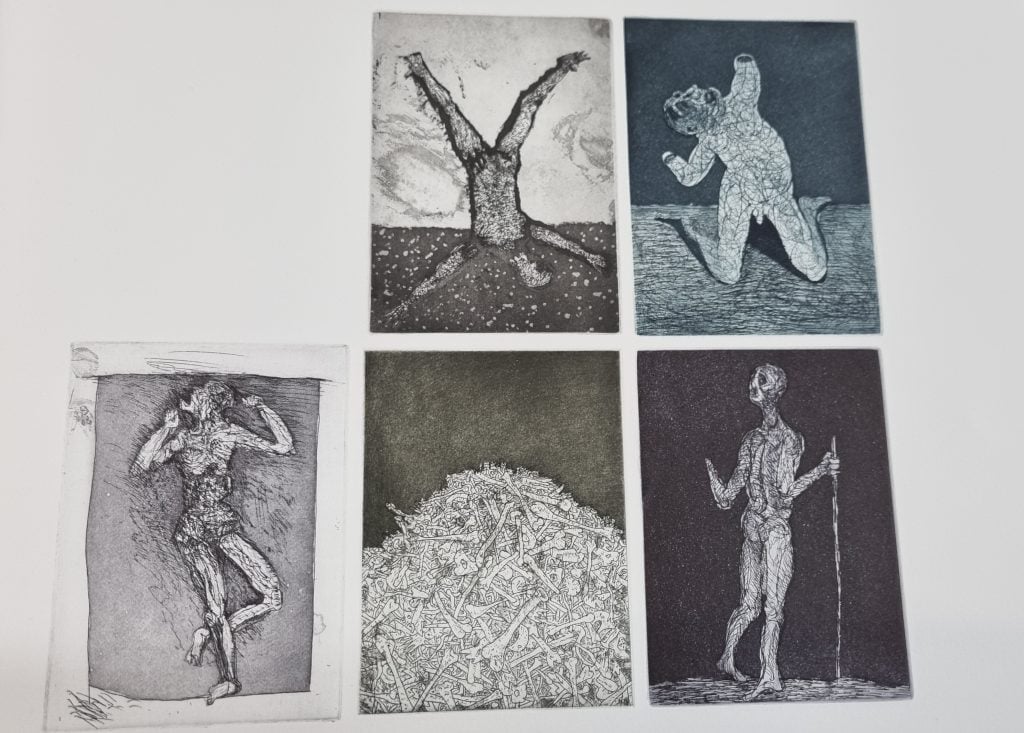
Udo Sellbach (1927 – 2006) was a German-born artist who emigrated to Australia in 1955. He lectured in printmaking at the South Australian School of Art, taught printmaking at RMIT University, and was founding Director of the Canberra School of Art, a position he held from 1977 to 1985, before retiring to live Hobart.
In 1995, Sellbach was awarded a Fellowship by the Australian National University, and during his time there embarked on a project to produce a limited-edition artist book based on Dante’s poem. The resulting work, And Still I See It, included 40 of his etchings, and was produced in a limited edition of 20 copies. The images were accompanied by Professor Margaret Plant’s translation of Canto 28 from Dante’s Inferno, along with her original poem ‘After Dante’.
In the final stages of the Second World War, Sellbach had been conscripted into the German army and sent to the Russian front. When looking at his etchings for And Still I See It, it is possible to detect something of this traumatic experience, filled as they are with bodies in extremis.

Udo Sellbach And Still I See It [detail] Canberra, ACT, CSA Artist Book Studio, 1995
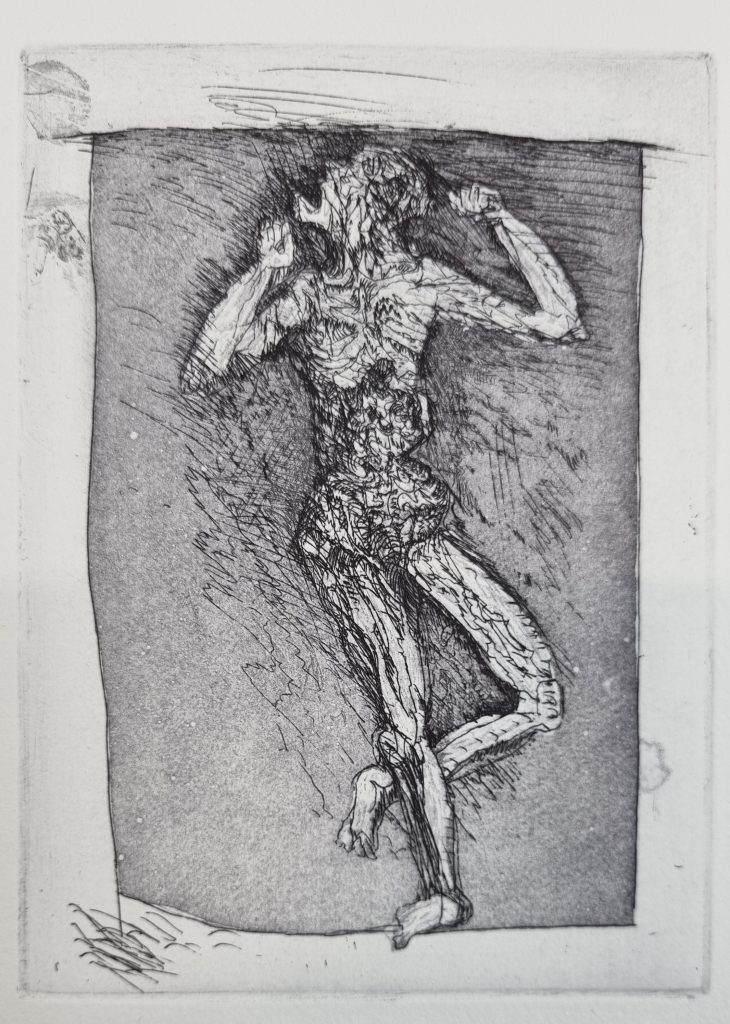
Udo Sellbach And Still I See It [detail] Canberra, ACT, CSA Artist Book Studio, 1995
Sellbach’s book was produced at the ANU’s Graphic Investigation Workshop, a centre for research and experimentation he had founded in 1978 when Director of the Canberra School of Art. For over two decades, the GIW was headed by Czech-born artist Petr Herel, and specialised in the production of artists books. Herel was responsible for the design of And Still I See It, while master printer Dianne Fogwell printed the etchings. The book’s title was drawn from Dante’s text: ‘I saw it in all certainty—and still I see it— / A headless body advancing / Moving with the sad crowd’.
Architect, visual artist and poet Alex Selenitsch (born 1946) first began engaging with the Dante’s Divine comedy as far back as the mid-1980s, after he’d come across Tom Phillip’s translations and illustrations for the Inferno. He was struck by the fact that most artists illustrating Dante focused on the first book only, and he began making works of art inspired by Dante’s second part of the poem Purgatorio. In the years since, he has produced a wide-ranging body of work – comprising architectural projects, furniture, sculptures, drawings, visual and concrete poems – exploring themes found in Dante’s poem.
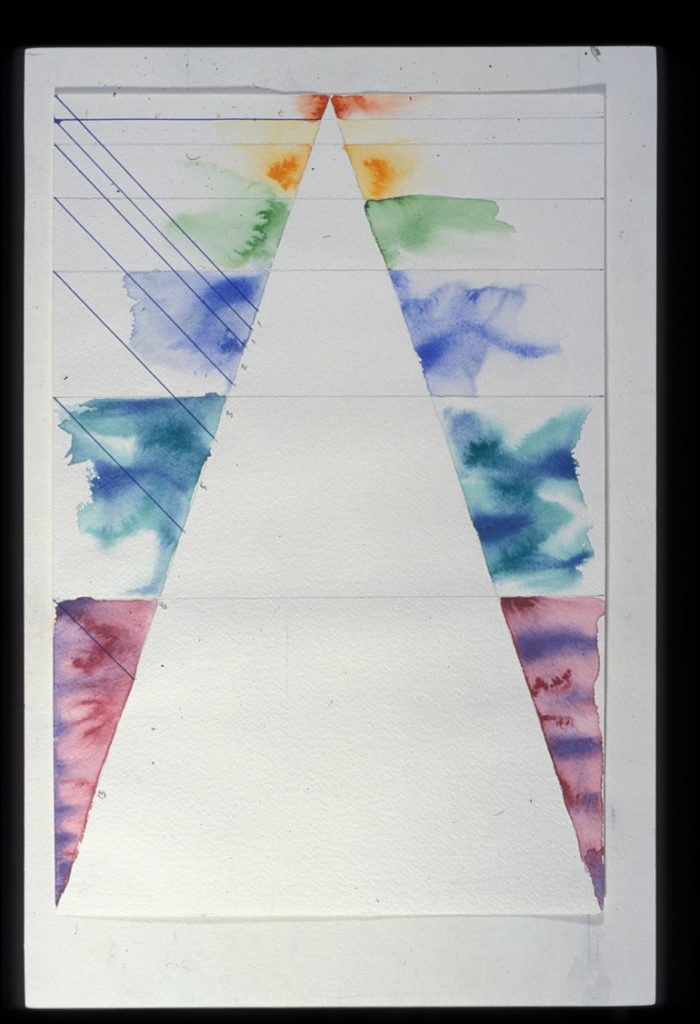
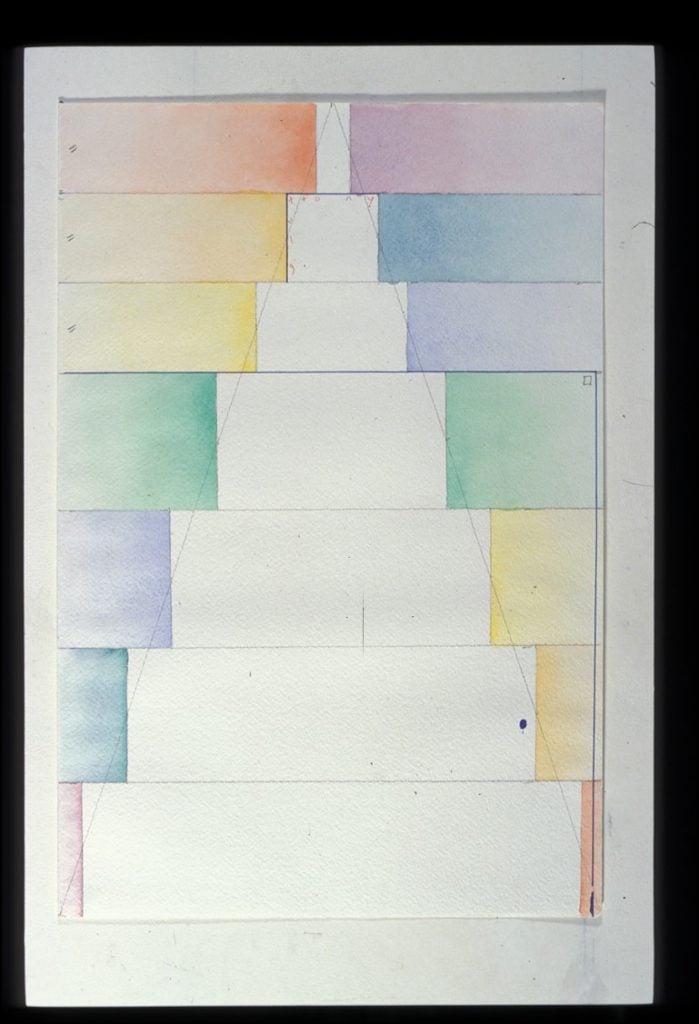
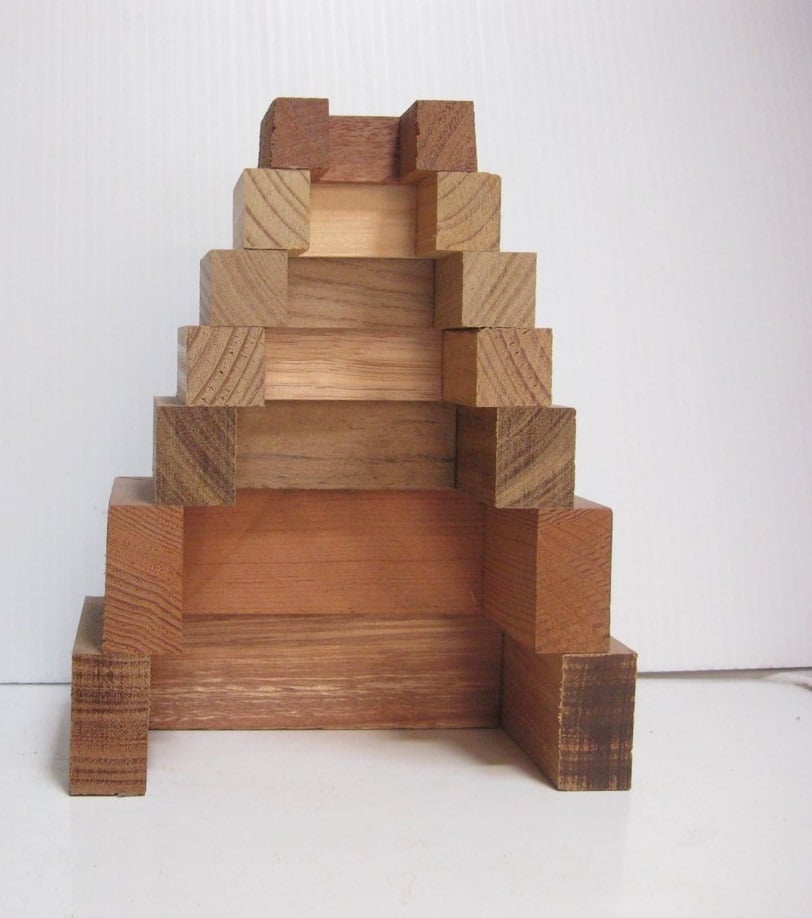
Selenitsch’s Seven Profiles of Mt. Purgatory, produced between 1995 and 2005, comprise seven drawings representing the seven sins or terraces of Dante’s Mount Purgatory. Each drawing has its own geometric setting, and the seven colours are applied in different ways to represent each sin. The bottom three sins (pride, envy, wrath) are coloured inside the mountain pyramid, the highest three (avarice, gluttony, lust) are coloured outside of the pyramid shape. The middle sin (sloth) was intended to be neither in nor out of the pyramid form.
Selenitsch’s sculptural piece, Half Mountain Cast, from 2006, is a virtual mountain assembled cornice by cornice, using a different timber for each level. While there is no intended relationship between a timber and a particular sin, the mountain can be visualised as an assemblage of all seven different sins together. More recently, Selenitsch completed his own re-write of Dante’s Purgatorio, entitled Purgatorio Re-placed, in which he re-interprets Dante’s medieval epic through the lens of Australian history and geography, as well as through his own personal history as a German-born refugee who arrived with his family in Australia in 1949 as UN-Displaced person.
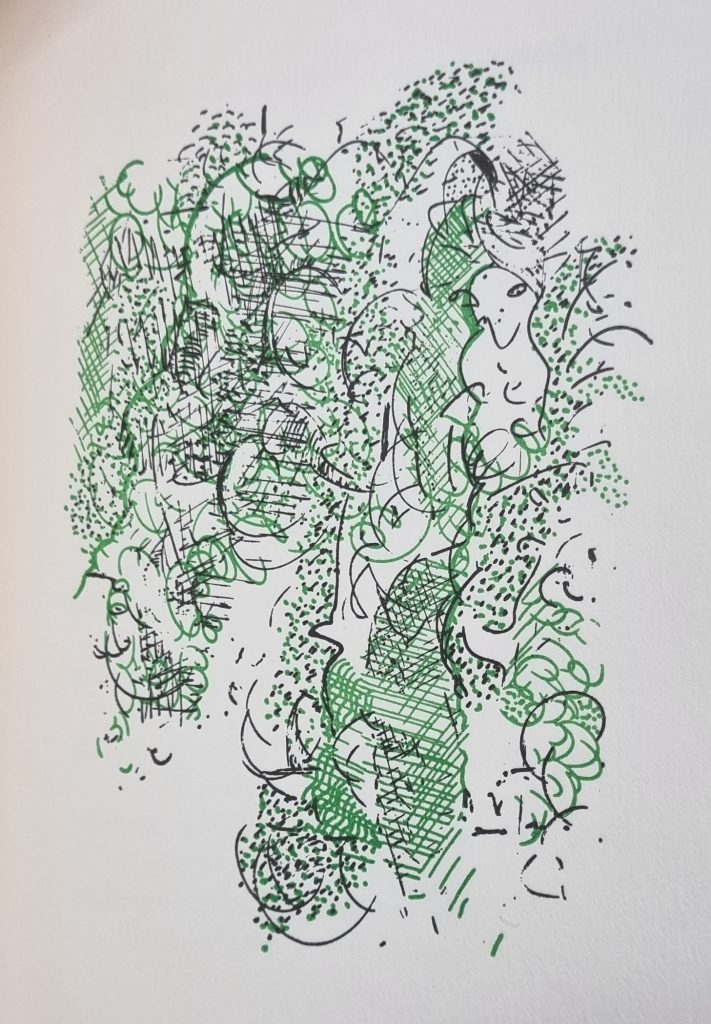
Melbourne artist Bruno Leti (born 1941) grew up in Roccantica, a small town not far from Rome, before emigrating with his family to Australia in 1952. His artist book, The Flowery Meadow, made in 2005, presents poet Chris Wallace-Crabbe’s translation of Canto 28 of Dante’s ‘Purgatory’, accompanied by Leti’s drawings, reproduced from magnesium blocks. In his afterword to the book, Leti posed the question: ‘How do we make visual what we feel about what we read?’ For inspiration, Leti drew upon his walking and drawing trips in China and in the Daintree Forest, Queensland, to recreate the winding ascent of Mount Purgatory, which ‘straightens souls whom the world has made crooked’. As a predominantly abstract artist, Leti made no attempt to recast Dante’s poem as a series of realistic scenes, preferring instead to ‘comment in lines, colours and shapes.’ The Flowery Meadow was designed and printed in 26 copies by Alan Loney, a New Zealand–born poet and letterpress printer currently residing in Melbourne.

Melbourne artists Angela Cavalieri and Peter Lyssiotis produced their own striking response to Dante’s Divine comedy in a series of three artists books made between 2004 and 2007. They took their title, – 1316, from the year Dante is believed to have completed the first part of his poem: Hell.
For their first book in the series, the two artists took Dante’s circles of hell as their starting point for an investigation into the circle as a geometric form, similar in intent to the investigations by Russian artist Kasimir Malevich into the square. Cavalieri and Lyssiotis have described how they ‘aimed for those things in Dante’s vision that echoed through to our own times’.

The second and third books in the series cover Purgatory and Paradise. Artists have generally shied away from interpreting the ‘Paradise’ section of The divine comedy, mainly because its calm content provides little opportunity for dramatic figural compositions.
In their case, rather than illustrating the narrative, the two artists formulated a more conceptual response to the poem. In keeping with the cosmography of his day, Dante conceived of heaven as consisting of the nine airy celestial spheres capped by the Empyrean, the fiery residence of God and the origin of all creation. Throughout, Cavalieri and Lyssiotis use the celestial blue and golden fire of paradise as a motif for their third and final volume in the series.

Given that illustrated copies of Dante’s poem date back to the medieval period, it is fair to say that Australian artists have been latecomers to a long tradition of pictorial responses. For Alex Selenitsch, inspiration came from learning that Dante’s Purgatorio ‘is set on an island of a single mountain in the southern hemisphere’. Each of these Australian artists – Udo Sellbach, Alex Selenitsch, Bruno Leti, Angela Cavalieri, Peter Lyssiotis – have European ancestry in common, a life’s journey straddling both hemispheres. By exploring universal themes found in Dante’s poem, they inevitably touch upon the personal, reclaiming something of the ‘in-between’ status of their own lives, so eloquently imagined by Dante in his opening lines: ‘At the midpoint on the journey of life, I found myself in a dark forest – for the clear path was lost’.

